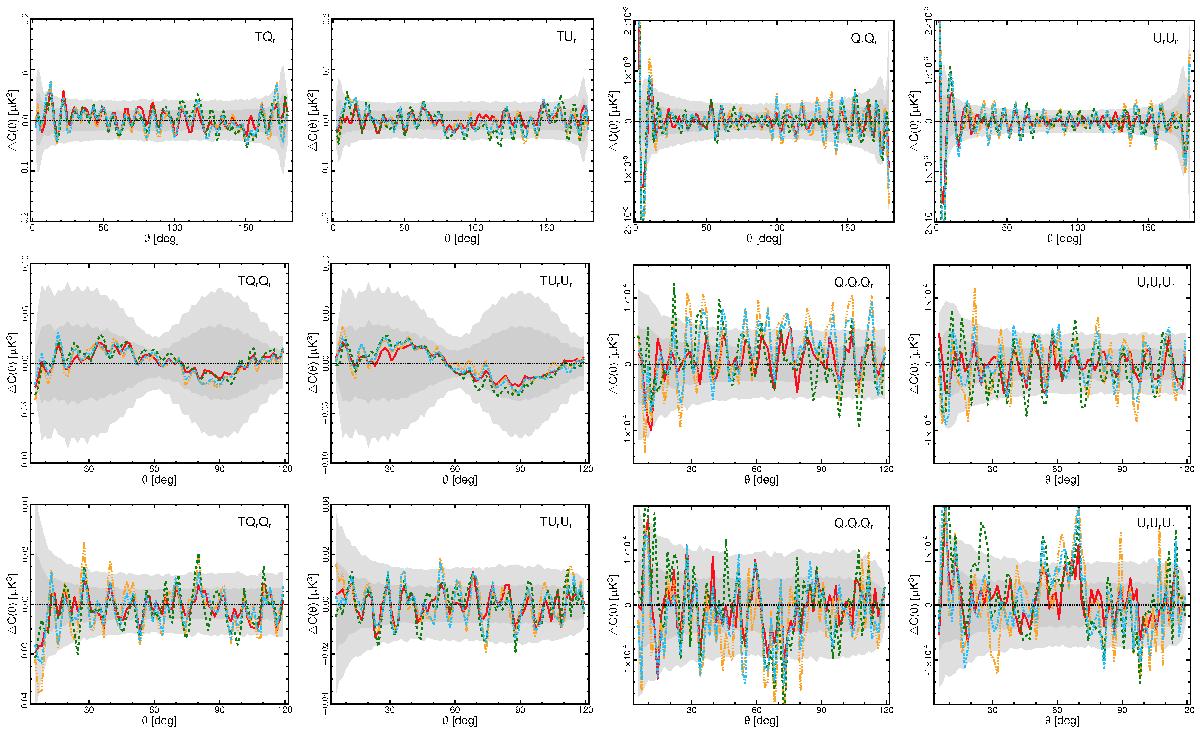Fig. 18

Difference between the N-point functions for the high-pass filtered Nside = 64Planck 2015 CMB estimates and the corresponding means estimated from 1000 Monte Carlo simulations. The Stokes parameters Qr and Ur were locally rotated so that the correlation functions are independent of coordinate frame. The first row shows results for the 2-point function, from left to right, TQr, TUr, QrQr, and UrUr. The second row shows results for the pseudo-collapsed 3-point function, from left to right, TQrQr, TUrUr, QrQrQr, and UrUrUr, and the third row shows results for the equilateral 3-point function, from left to right, TQrQr, TUrUr, QrQrQr and UrUrUr. The red solid, orange triple-dot-dashed, green dashed and blue dot-dashed lines correspond to the Commander, NILC, SEVEM, and SMICA maps, respectively. The shaded dark and light grey regions indicate the 68% and 95% confidence regions, respectively, estimated using SMICA simulations. See Sect. 7.2 for the definition of the separation angle θ.
Current usage metrics show cumulative count of Article Views (full-text article views including HTML views, PDF and ePub downloads, according to the available data) and Abstracts Views on Vision4Press platform.
Data correspond to usage on the plateform after 2015. The current usage metrics is available 48-96 hours after online publication and is updated daily on week days.
Initial download of the metrics may take a while.














